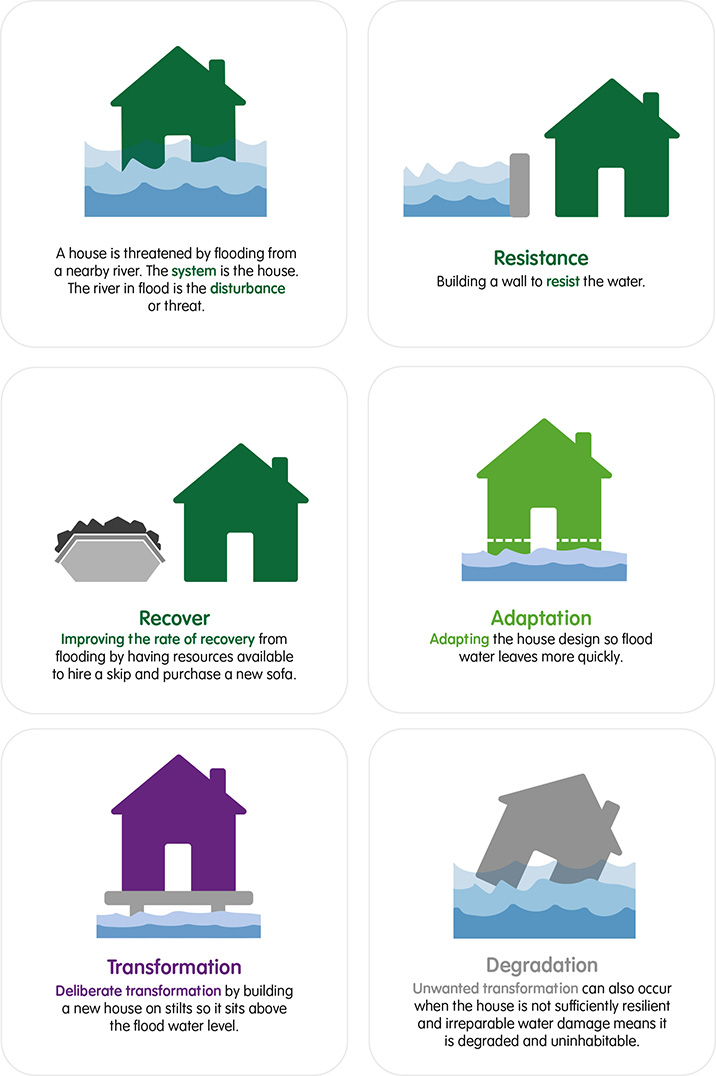Resilience can be broken down into four components: resistance, recovery, adaptation and transformation as shown below. These reflect how a system (e.g. group of trees, woodland, forest), changes in response to disturbance. Each of the four components might occur without intervention but they can also be supported or hindered by management actions. Note that the distinction between some of these components depends on how the system is defined and can sometimes be blurred, particularly between adaptation and transformation.

Disturbance is the threat, shock, stress or disruption to the system against which resilience is sought. There may be multiple disturbances, particularly when long planning timescales are considered, which may include climatic, biotic (e.g. pests and diseases), or economic (e.g. threats to markets). Many disturbances may not be preventable or predictable (e.g. drought, storm, novel pests) hence the focus on resilience of the affected system.
1. Resistance is the ability of a system to prevent or absorb impacts from a disturbance and continue to function in the same state. Resistance may be enhanced through preventative actions (e.g. deer fencing to reduce the impact of browsing).
2. Recovery is the ability of a system to bounce back to its original state (e.g. with fundamentally the same structure and function). Recovery is therefore a process/activity that largely occurs after the impact of disturbance, but preparatory steps can be taken (e.g. protecting natural regeneration in a semi-natural woodland to promote recovery after a windthrow event).
3. Adaptation can describe the often longer process through which the system is modified to accommodate impacts without losing its essential character/identity (e.g. the mix of tree species may change over time in response to disease, but the overall functions/values of the woodland remains).
4. Transformation is when the response to the disturbance is so dramatic it results in the creation of a new system. This may be acceptable or even planned when the existing system is undesirable (e.g. poorly growing trees on deep peat being removed to allow peatland restoration) or when adaptation will be insufficient to counter a threat. Alternatively, transformation may involve degradation when recovery fails after a disturbance and a new unwanted system develops by default (e.g. the failure of felled areas to recover due to overgrazing).
These four components are illustrated by the example below, which considers responses to flooding from a house owner.

